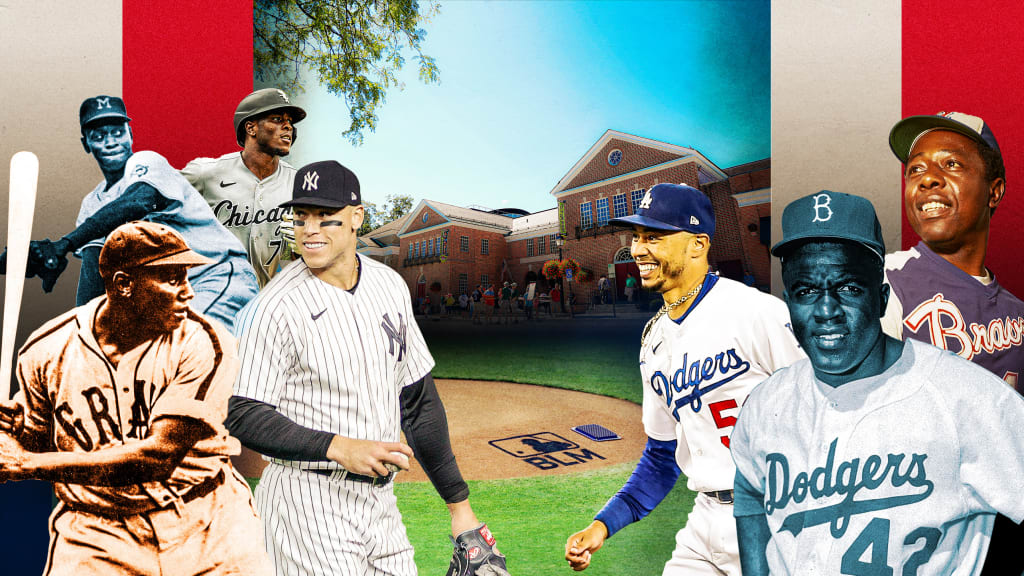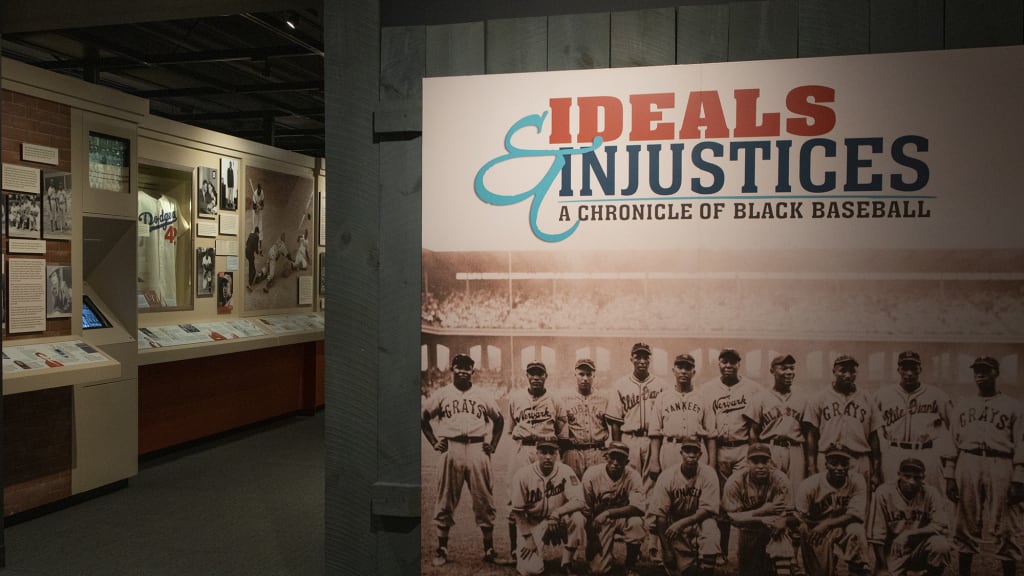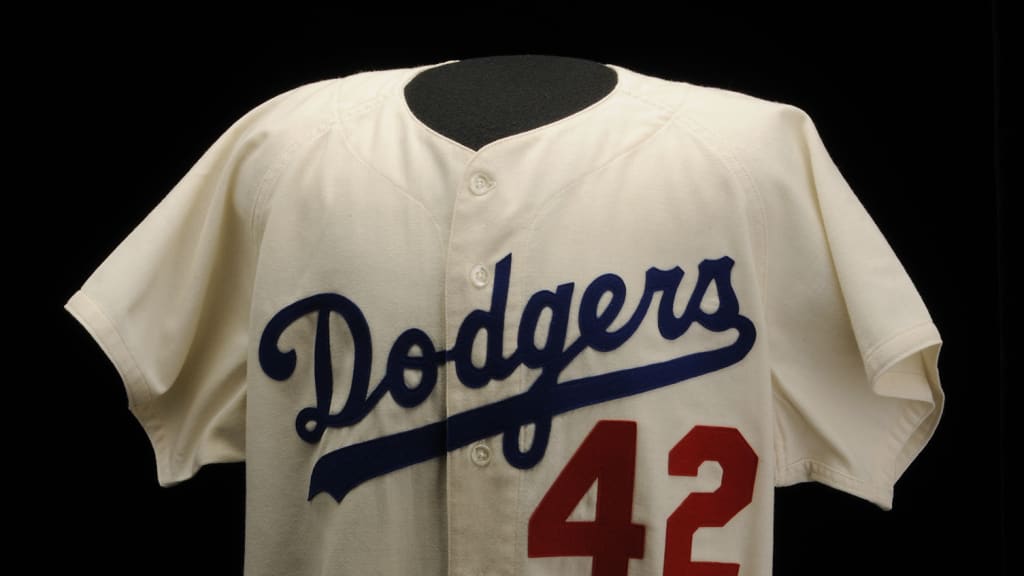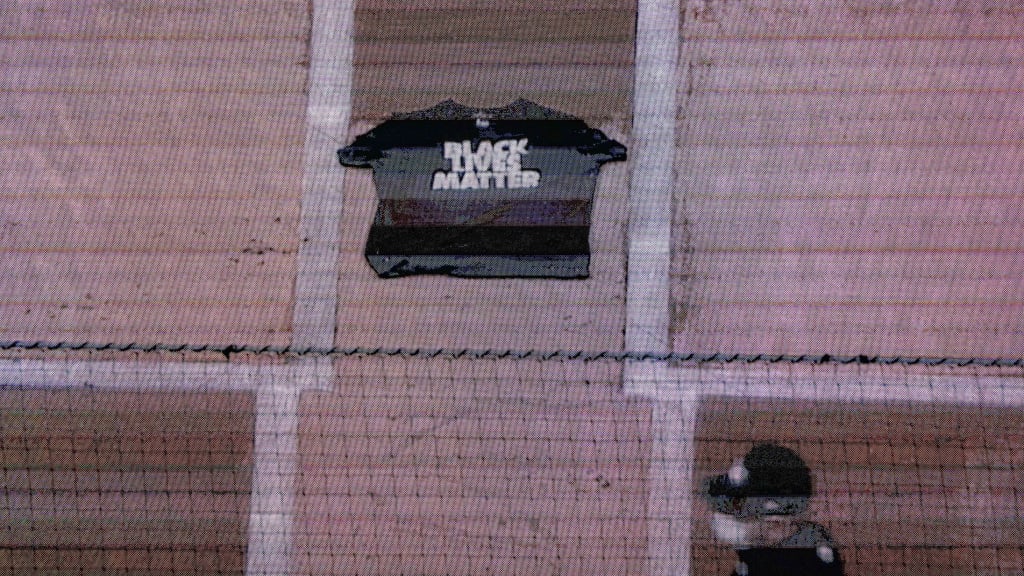
"I like to tell people that baseball, in the moment of integration in 1947 -- it's not a light switch. It's not like all of a sudden you flip the switch, and then everything was good," Erik Strohl, the Vice President of Exhibitions and Collections at the National Baseball Hall of Fame, said in a recent Zoom call. "I mean, it's a constant struggle."
That's where the Hall of Fame was starting from when it announced on Friday -- the 75th Anniversary of Jackie Robinson crossing the color barrier -- that it was going to update its Black baseball exhibit, with it set to open to the public in 2024.
In 1997 -- the 50th anniversary of Robinson's debut -- the Hall first opened "Pride and Passion: The African-American Baseball Experience," which would later be retitled "Ideals and Injustices." This exhibit went much further than the Hall had done previously, looking at the story of Black baseball in three sections: The Civil War era to the 1920s, the Negro Leagues era, and the Majors in 1947 and beyond. As Strohl pointed out, that wasn't necessarily the most important part.
"An integral part of this exhibit was a timeline along a text rail -- which went along the length of the entire exhibit, really, -- that talked about not just moments of what has gone on in Black baseball, but mirroring it against the struggles of African Americans in society as a whole and the struggles for civil rights and how they mirrored each other," Strohl said. "That has always been an important part of this exhibit, to talk about it in context and within culture in a larger society."


But in the 25 years since the exhibit first opened, a lot of work and societal change has taken place. New research into Black baseball history led to 17 Negro Leagues players being inducted into the Hall of Fame in 2006 and the inclusion of Negro Leagues statistics into Major League records in 2020. There has also been an important shift in how we discuss the societal issues of racism, highlighted by the Black Lives Matter movement and protests by players and the public following the murders of George Floyd and Breonna Taylor, and the police shooting of Jacob Blake.
The Hall believes it is time for the exhibit to reflect those changes.
"When you say an exhibit is permanent in the museum world, that's generally 20-to-25 years before it's no longer relevant in terms of being timely," Strohl said. "Being the 75th anniversary of Jackie Robinson coming up and having had it up for 25 years, it became quite apparent that it was time to retell this story. There's been a lot more scholarship done since we did this exhibit 25 years ago."

“This collaborative effort to celebrate and share the history of Black baseball is unlike any exhibit exploration undertaken in the Museum’s 83-year history,” Josh Rawitch, President of the National Baseball Hall of Fame and Museum, said in a press release. “The parallel development of civil rights within baseball and in greater American society demonstrate how our game reflects our country’s history, and the new exhibit, scheduled to open in 2024, will provide Museum guests with the chance to explore and discuss these issues when they visit Cooperstown, online and through new educational initiatives.”
Though the new exhibit won't open for two years, the Hall of Fame has already been working on changing how some of the stories are told when it comes to players like Cap Anson who are in the Hall of Fame, but also played roles in enforcing the segregation of the sport.
"We actually updated and changed some labels over the past couple of years because we realized that we needed to provide more background in terms of these people's stories, so it wasn't particularly one-sided," Strohl said. "There's good and bad to lots of ballplayers and lots of facets of life, but we certainly didn't want to celebrate some of the Hall of Famers without mentioning the roles they might have played in racism, segregation and the extension of that. [Commissioner Kenesaw Mountain] Landis is another good example, where the baseball writers removed his name from the MVP Award, but we also changed the labelling and how we talked about him within the museum and within that exhibit specifically."
As they begin working on what to include in this new exhibit, Strohl stressed the importance of reaching out and finding new voices to help share this story. The Hall is searching for another curator to join for this project before staying on in a permanent role afterward. They are also planning to work with multiple other organizations, historians, scholars and baseball players for input into the exhibit. That could include the Smithsonian, the Negro Leagues Museum, the Players Alliance, current players, Black Hall of Famers, and people from Major League Baseball, among others. A few former players who have already been named as part of the Advisory Board are Ken Griffey Jr., Barry Larkin, Dave Winfield, Doug Glanville, Adam Jones and Dave Stewart.
"As we move forward, we felt it very important to include other voices and perspectives rather than just ours in Cooperstown to make sure that the story is being told properly in a well-rounded way," Strohl said. "I think that's quite evident when we look at what's happened in society over the last couple years, with the Black Lives Matter movement and how society's evolving understanding of racism and how we talk about it and what it means."
They know this next step won't be the last. The story of Black baseball players and the racism they face is still ongoing and the conversation around these topics continues to grow.
"We need to make sure that we include that evolution of thinking in the way the exhibit talks about baseball, the Negro Leagues and racism and baseball's part of a larger society as a whole," Strohl said. "This can be a pretty depressing topic by nature because it's one of exclusion, but it's also important to celebrate what this was and celebrate Black culture through the lens of baseball."
